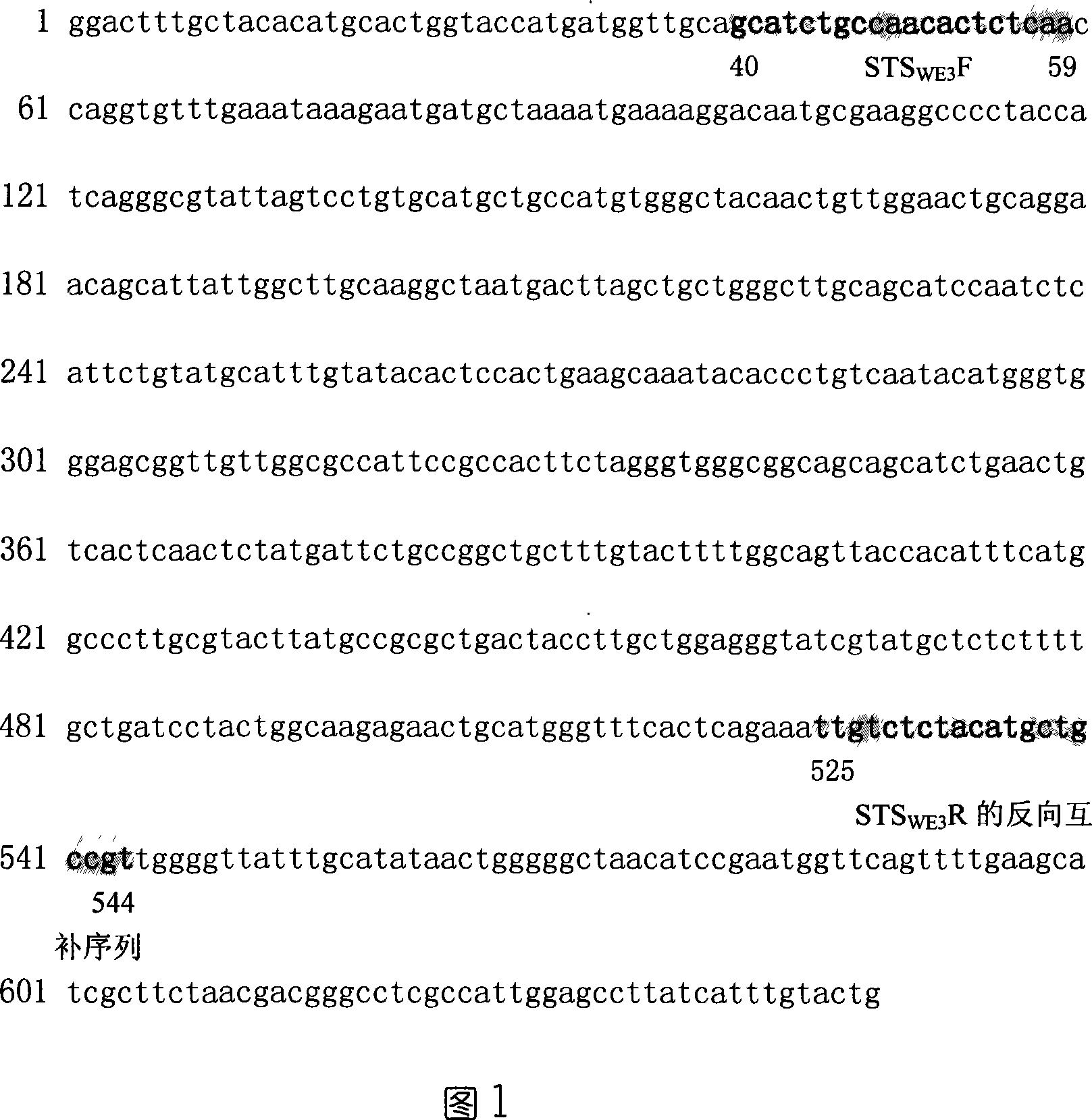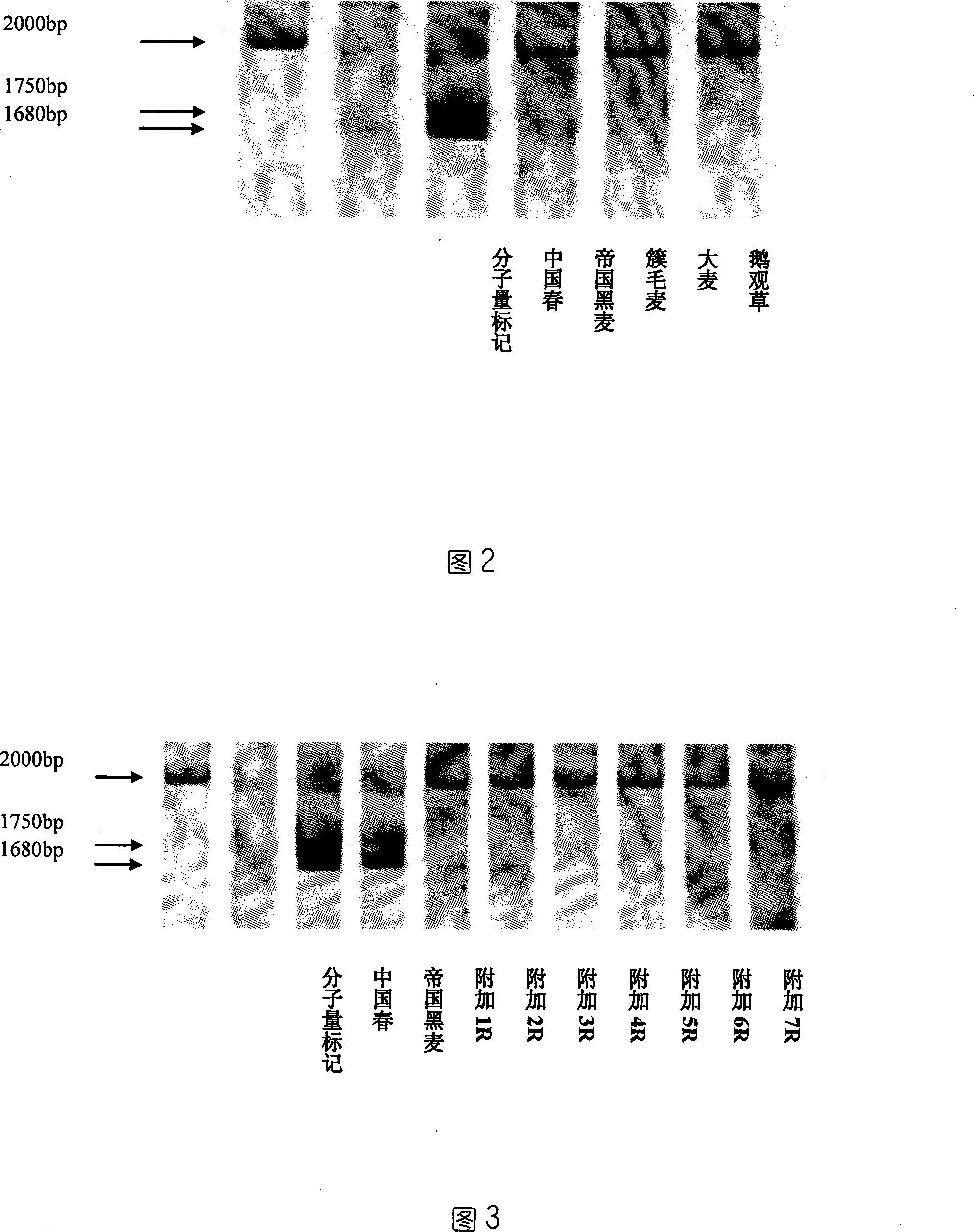EST-STS marking primer 2 with differential rye1RS chromosome, screening method and use
A technology of EST-STS and labeled primers, which is applied in biochemical equipment and methods, measurement/inspection of microorganisms, DNA/RNA fragments, etc., can solve problems such as inability to identify and distinguish, and broaden the scope of use and experimental conditions loose, binding effect
- Summary
- Abstract
- Description
- Claims
- Application Information
AI Technical Summary
Problems solved by technology
Method used
Image
Examples
Embodiment 1
[0029] Embodiment 1, design and screening of primers
[0030] 1. Acquisition of EST sequence: According to the wheat expressed sequence tag (EST) database released by the United States Department of Agriculture website (http: / / wheat.pw.usda.gov / GG2 / index.shtml), search for the homology located in the first part of wheat ESTs and sequences of different physical segments of the group, select 35 EST sequences with strong conservation and base numbers greater than 300bp for download. Figure 1 is the base sequence of one of the EST-BE443401.
[0031] 2. Design and synthesis of primers: The EST sequences downloaded in step 1 were used to design primers using PrimerPremier 5.0 software, and a total of 35 pairs of primers were designed. The conditions for primer design are annealing temperature 50-60°C, primer length 18-22bp, GC% content (the ratio of Guanine and Cytosine to the total number of bases) is 40-60%, and the expected amplification product is 300-600bp . The designed pri...
Embodiment 2
[0039] Example 2. Detection application of the labeled primers of the present invention in 1RS translocation materials
[0040] Using the rye 1RS chromosome-specific marker primer STS screened in Example 1 WE3 , to amplify part of the progeny material of the cross between Xiaoyan 6 and "German white grain" rye (S.cereale L.cv german white), the reaction conditions and the amplification procedure are the same as step 4, and the amplified product is carried out after the amplification reaction Detection, the detection method is the same as step 4. As a result, among the 11 materials tested, 4 materials amplified specific bands with a size of 1680bp and 1750bp, which can be confirmed to contain the rye 1RS chromosome. The other 7 materials did not amplify the two corresponding specific bands, so it can be determined that they do not contain the rye 1RS chromosome, as shown in Figure 5 . This result was consistent with the identification result of genome in situ hybridization.
PUM
 Login to View More
Login to View More Abstract
Description
Claims
Application Information
 Login to View More
Login to View More - R&D
- Intellectual Property
- Life Sciences
- Materials
- Tech Scout
- Unparalleled Data Quality
- Higher Quality Content
- 60% Fewer Hallucinations
Browse by: Latest US Patents, China's latest patents, Technical Efficacy Thesaurus, Application Domain, Technology Topic, Popular Technical Reports.
© 2025 PatSnap. All rights reserved.Legal|Privacy policy|Modern Slavery Act Transparency Statement|Sitemap|About US| Contact US: help@patsnap.com



